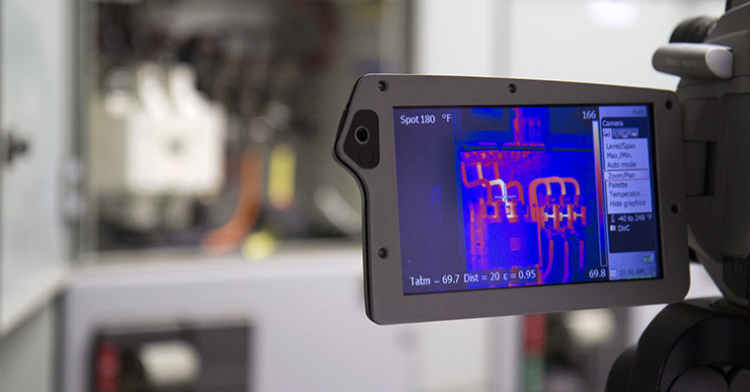- Home
- About
- Courses
- IR/INFO CONFERENCE
- Software
- EXPERT SERVICES
- STANDARDS
- Proposal Templates
- Electrical Systems and Rotating Equipment
- Building Envelopes
- Insulated Roofs
- Photovoltaic Systems
- Pest Detection
- Yachts and Small Craft
- Thermal Imaging of Horses
- Optical Gas Imaging
- Measuring Reflected Temperature
- Measuring Emittance
- Measuring Transmittance
- Distance/Target Size Ratios
- Complete Series
- Resources
- BUSINESS OPPORTUNITIES
- STORE

Director’s Message

Because infrared thermography is a visual inspection technique, its effectiveness relies on the observation skills of the thermographer. Like any visual inspection technique, a thermographer must actively concentrate on the imagery displayed by their thermal imager.
Contrary to popular belief, humans are not inherently effective observers. Because humans tend to be casual in their observations, they frequently overlook subtleties. Whenever imaging, a thermographer’s eyes should always visually scan the monitor left to right and up and down while asking him/herself the following three questions:
- What am I seeing?
- Why am I seeing this?
- Is this normal/reportable?
While this approach may sound cumbersome at first, this practice will soon become instinctive and can help prevent you from overlooking the subtle thermal patterns that can be indicative of serious problems.
Tips for Purchasing a Thermal Imager

Procuring an imager is a challenge for many reasons: initial purchase price can easily run into the tens of thousands of dollars, no imager is capable of performing all imaging applications, imager performance varies widely, performance specs are not always available or comparable, and making an incorrect purchase can be costly.
Purchasing an imager should be done by assessing your company’s present and future needs, obtaining and comparing manufacturer specifications, and taking time to thoroughly evaluate the imager in the workplace where it will be used. Prior to purchase, the imager and its manufacturer should be carefully evaluated in the following areas:
- Ascertain imagers objective and performance specifications
- Obtain service and warranty information
- Evaluate imager for subjective characteristics
- Consider equipment value
Lastly, when considering pre-owned equipment, it is often a good idea to have a title search conducted prior to purchase to ensure that the equipment is free of liens.
Detecting Underground Pipe Leaks

When a leak develops in a buried piping system, fluid is lost to the surrounding earth. If a leak from a heated or cooled piping system is sufficiently large, a temperature change will occur at the surface of the ground in the vicinity of the pipe leak.
Infrared inspections of buried piping systems are best performed late at night with calm wind conditions. Inspections may be performed on foot, from a motor vehicle, or from an aircraft. Performing the inspection late at night will eliminate the effects of solar loading and solar reflection.
During the inspection, the thermal imager is maneuvered over the pathway of the pipeline. Well-defined straight lines that correspond to the location of the buried lines generally indicate a healthy piping system. Amorphously shaped thermal anomalies that cannot be explained in terms of piping system construction or features may be indicative of pipe leaks and should be marked and subsequently investigated for cause.
Call for Papers for IR/INFO 2017

Presentations are typically 25 minutes with 5 minutes for Q & A time with the audience. All papers and presentations will be published in the IR/INFO Proceedings. The deadline for abstract submissions is July 31.

Professional Curriculum
Infraspection Institute instructors use extraordinary techniques to deliver stimulating, effective, and relevant instruction. All of our instructors are highly experienced, practicing thermographers. Each brings years of unmatched, real-world experience to the classroom. Our courses are taught using a combination of dynamic multi-media presentations, hands-on demonstrations and one-on-one interaction with students. Our courses integrate theory, practice, and case studies in a fun, relaxed atmosphere designed to maximize your learning experience.
